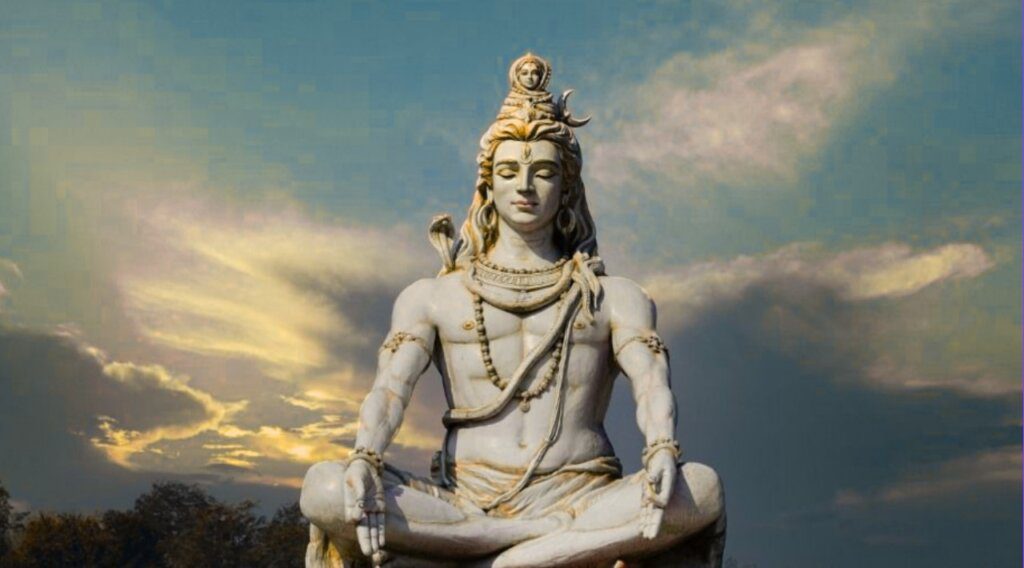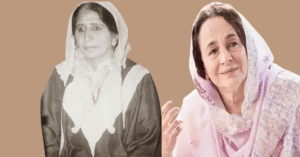Have you ever wondered what makes Kashmir Shaivism so special? This mystical tradition, originating from the beautiful valleys of Kashmir, has captivated spiritual seekers for over a thousand years.
And for good reason.
Kashmir Shaivism isn’t just another philosophical system. It’s a complete roadmap to understanding your true nature and the universe itself.
Kashmir Shaivism, a profound spiritual and philosophical tradition rooted in the mystical valleys of Kashmir, stands as one of the most sophisticated schools of Indian thought.
This non-dualistic (Advaita) tradition, which flourished from the 9th century CE, has produced some of the greatest saints, philosophers, and mystics in Indian history, whose teachings continue to inspire seekers worldwide.
This comprehensive article examines the origins, core doctrines, and the lives of the saints who have shaped and carried Kashmir Shaivism throughout the centuries

What is Kashmir Shaivism?
Kashmir Shaivism is a monistic school of Shaiva Tantra that originated in Kashmir around the 9th century CE. It is also known as the Trika system, referring to its triadic approach to reality, consciousness, and liberation.
Unlike other dualistic forms of Shaivism, Kashmir Shaivism asserts the absolute unity of the individual soul (atman) with the universal consciousness (Shiva).
Core Philosophy of Kashmir Shaivism
- Non-Dualism (Advaita): The tradition teaches that everything in existence is a manifestation of one universal consciousness—Shiva. There is no fundamental separation between the individual and the divine.
- Role of Shakti: Shakti, the divine feminine energy, is inseparable from Shiva. All creation and manifestation arise from the interplay of Shiva (pure consciousness) and Shakti (dynamic energy)
- Triadic Framework (Trika): Reality is understood through triads, such as Shiva-Shakti-Anu (the individual), three powers (will, knowledge, action), and three states of consciousness (waking, dreaming, deep sleep)
- Recognition (Pratyabhijna): Liberation is achieved not by renunciation, but by recognising one’s true nature as Shiva
Origins and Early Development of Kashmir Shaivism
Kashmir Shaivism emerged as a response to earlier Tantric traditions, adapting the practices and philosophies of Kashmiri Pandits into a more systematic and accessible form.
The tradition’s foundational texts, such as the Shiva Sutras (attributed to Vasugupta) and the Spanda Karikas (by Vasugupta or Bhatta Kallata)( student of Vasugupta), laid the groundwork for its metaphysical and spiritual doctrines.
Key Early Texts Of Kashmir Shavism
- Shiva Sutras: Revealed to Vasugupta in a dream, these aphorisms form the core of Kashmir Shaivism’s soteriology and metaphysics
- Spanda Karikas: Expound the concept of spanda or cosmic vibration, the creative pulse of Shiva
Shiva Sutras: The Shiva Sutras are a foundational text of Kashmir Shaivism, comprising 77 aphorisms (sutras) attributed to the 9th-century CE sage Vasugupta, who lived in Kashmir.
These sutras form the core of the Trika (non-dual) philosophy of Kashmir Shaivism and are considered a compendium of secret doctrines revealed by Lord Shiva himself.
The Shiva Sutras are divided into three sections, known as “upayas” or means of liberation:
- Shambhavopaya (the path of Shiva, or direct realisation)
- Shaktopaya (the path of Shakti, or knowledge)
- Anavopaya (the path of the individual, or effort)
Spanda Karikas: The Spanda Karikas are another central text of Kashmir Shaivism, closely associated with the Shiva Sutras. The term Spanda means “vibration” or “pulsation,” referring to the dynamic, creative aspect of consciousness.
The Spanda Karikas are traditionally attributed to Vasugupta or his disciple Bhatta Kallata, who lived in the latter half of the 9th century. The text is often seen as a commentary or extension of the teachings found in the Shiva Sutras, elaborating on the principle of spanda—the innate dynamism and vibratory nature of consciousness that underlies all of reality.
Philosophical Themes
The Spanda Karikas explore how the universe arises from the subtle pulsation of consciousness (Shiva) and how spiritual realisation involves attuning oneself to this inner vibration. The text emphasises that liberation is not found by renouncing the world, but by recognising the divine pulsation within all experiences.
The Great Saints and Philosophers of Kashmir Shaivism
Kashmir Shaivism is a profound non-dualistic philosophical and spiritual tradition that arose in the Kashmir Valley, flourishing between the 8th and 11th centuries CE. Its enduring legacy is mainly due to the contributions of a remarkable lineage of saints and philosophers who systematised, expanded, and preserved its teachings. Below is a detailed account of the most influential figures in this tradition, their philosophies, and their impact.
Vasugupta (c. 800–850 CE)
Vasugupta is traditionally regarded as the founder and revealer of Kashmir Shaivism. He is credited with the discovery of the Shiva Sutras, the foundational aphorisms of the tradition. According to legend, Shiva revealed these sutras to Vasugupta in a dream or directed him to find them inscribed on a rock on Mount Mahadeva in Kashmir.
The Shiva Sutras articulate the non-dualistic vision of reality, emphasising that the entire universe is a manifestation of Shiva, the supreme consciousness. Vasugupta’s teachings paved the way for a cultural and religious renaissance in Kashmir, establishing the metaphysical and practical basis for later Shaiva philosophy.
Bhatta Kallata (9th century CE)
A direct disciple of Vasugupta, Bhatta Kallata is renowned for his work, the Spanda Karikas. This text elaborates on the doctrine of spanda—the creative, dynamic vibration or pulsation of consciousness. Kallata’s teachings emphasise that the universe is not static but is a living, vibrating reality, and spiritual realisation involves attuning oneself to this divine pulsation.
Through his writings, Bhatta Kallata systematised and clarified the emerging philosophy, ensuring its transmission to future generations.
Somananda (c. 875–925 CE)
Somananda was a pivotal theologian who further developed the monistic doctrine of Kashmir Shaivism. His seminal work, Shivadristi, systematically articulated the philosophical foundations of the tradition, particularly the Trika system, which explores the triadic nature of reality (Shiva, Shakti, and the individual soul.
Somananda’s teachings were crucial in establishing a coherent metaphysical framework, influencing all subsequent Shaiva philosophers.
Utpaladeva (c. 900–950 CE)
Utpaladeva, a philosopher-poet and disciple of Somananda, is best known for his Ishvarapratyabhijna Karika (“Verses on the Recognition of the Lord”). This text became the cornerstone of the Pratyabhijna (Recognition) school, which teaches that liberation is achieved through the direct recognition of one’s identity with Shiva. Utpaladeva’s devotional hymns, such as the Shivastotravali, remain central to Kashmiri Shaiva practice, blending rigorous philosophy with heartfelt devotion.
Abhinavagupta is widely regarded as the most illustrious and influential master of Kashmir Shaivism. A polymath—philosopher, mystic, poet, and aesthetician, he synthesised the entire tradition in his magnum opus, the Tantraloka. This encyclopedic work encompasses philosophy, ritual, yoga, and aesthetics, and is regarded as the definitive guide to Shaiva Tantra.
Abhinavagupta’s radical inclusivity, which transcended caste, gender, and social restrictions, marked a significant evolution in Indian spirituality. He is revered as an incarnation of Bhairava Shiva and is considered the final authority on all aspects of Shaivism and Tantric philosophy.
“O, my devotees! On this path of supreme Bhairava, whoever has taken a step with pure desire, no matter if that desire is slow or intense; it does not matter if he is a Brahmin, if he is a sweeper, if he is an outcast, or if he is anybody; he becomes one with Para-bhairava.”
— Abhinavagupta, Paramarthasara
Ksemaraja (c. 10th–11th century CE)
A devoted disciple of Abhinavagupta, Ksemaraja is celebrated for his commentaries and independent works that clarified and popularised his master’s teachings. His Pratyabhijna Hridayam is a concise summary of the Recognition philosophy and remains a widely studied text among modern practitioners3. Ksemaraja’s writings ensured the accessibility and continuity of Kashmir Shaivism’s core doctrines.
Later and Modern Saints of Kashmir Shaivism
Swami Lakshman Joo (1907–1991)
In the 20th century, Swami Lakshman Joo emerged as the most prominent modern exponent of Kashmir Shaivism. He is credited with reviving the oral and scholarly traditions of the lineage, making its teachings accessible to a global audience through translations, commentaries, and public discourses.
Swami Lakshmanjoo was revered as the last in an unbroken chain of masters and was instrumental in disseminating the teachings both in India and abroad through his disciples.
Other Notable Saints
Kashmir has also produced a host of saints, mystics, and spiritual teachers who have made significant contributions to the region’s spiritual and cultural life. Some of these include Lalleshwari (Lal Ded), Rupa Bhawani, Parmanand, Rishipir, Jeewan Shah, Anandji, Ramji, Sahib





Pingback: Abhinavagupta: Master of Kashmir Shaivism and Tantric Wisdom | Rohit Tikoo